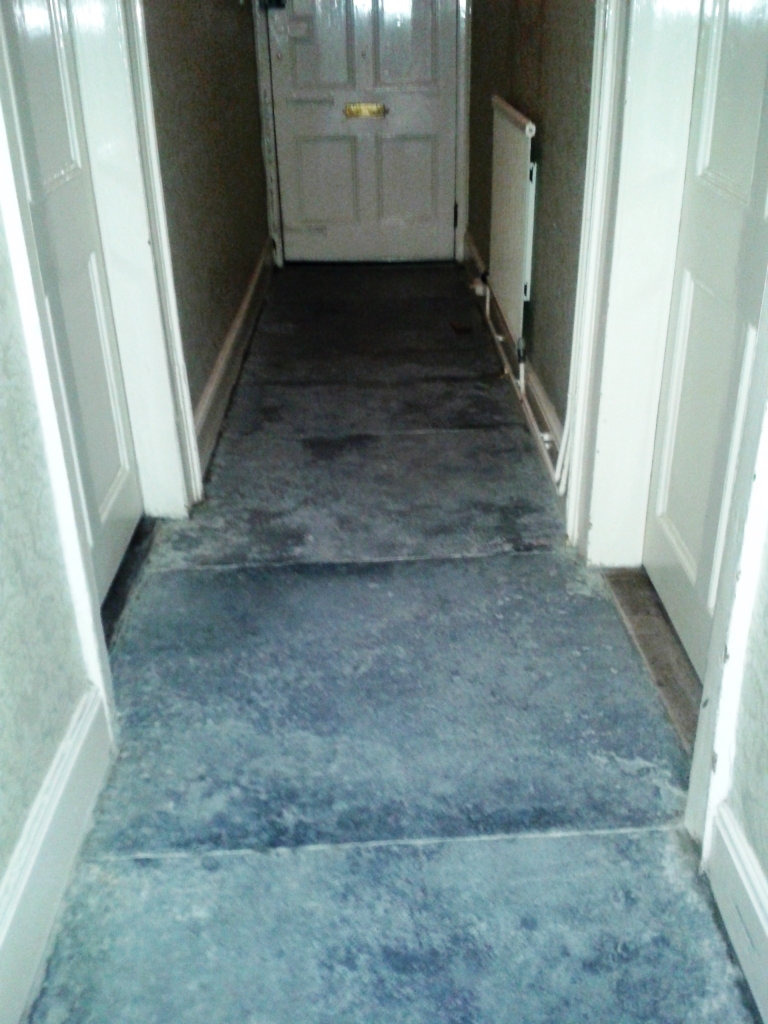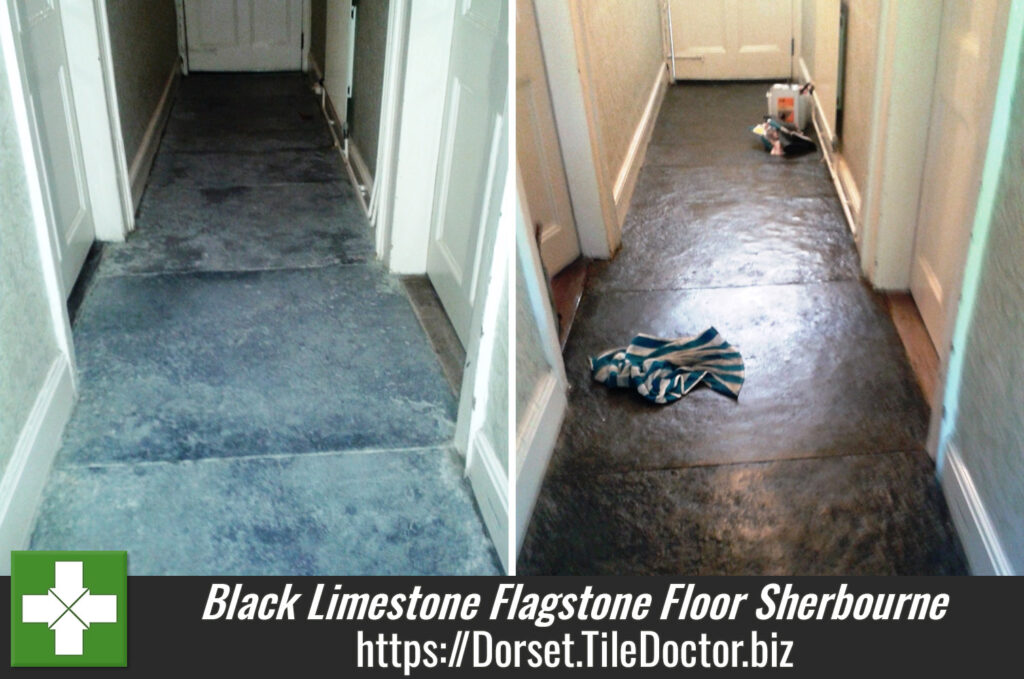This Georgian house in the beautiful historic town of Sherbourne, Dorset still had its original floor of black limestone flagstones. These were in a sorry condition, having been smoothed over with a cement screed to make it level for a carpet and, before that, painted at various times with both red and green floor paint.
A combination of cement, hardened carpet glue and old floor paints all needed to be completely removed before I could even begin to clean the original stone beneath.

Removing Sealer from Limestone Floor Tiles
After chipping away the areas of cement with a chisel I used an application of Tile Doctor Remove and Go which was left to soak into the stone for a while in order to loosen the old floor paint before steaming and wire-brushing the entire floor. This I followed with an application of Tile Doctor “Pro Clean” scrubbed in with a black buffing pad under fitted to a Numatic buffing machine to further clean the slabs.
Next step was to cut back and re-polish the Limestone flagstone using of a set of diamond encrusted burnishing pads fitted to a rotary machine. You start with a coarse pad with a little water, then a medium pad, fine pad and finish with a very fine polishing pad rinsing the floor between each pad.
Sealing Limestone Floor Tiles
Following all this treatment the flagstones needed a few days to thoroughly dry out after which I returned to seal them with Tile Doctor “Colour Grow”, a long lasting impregnating sealer which enhanced the natural colour of the tiles and turned them from a drab grey to a rich and shining black.


Nice work, those Limestone flagstones have some history and will now restored will be a great feature in the home and add value to the property.